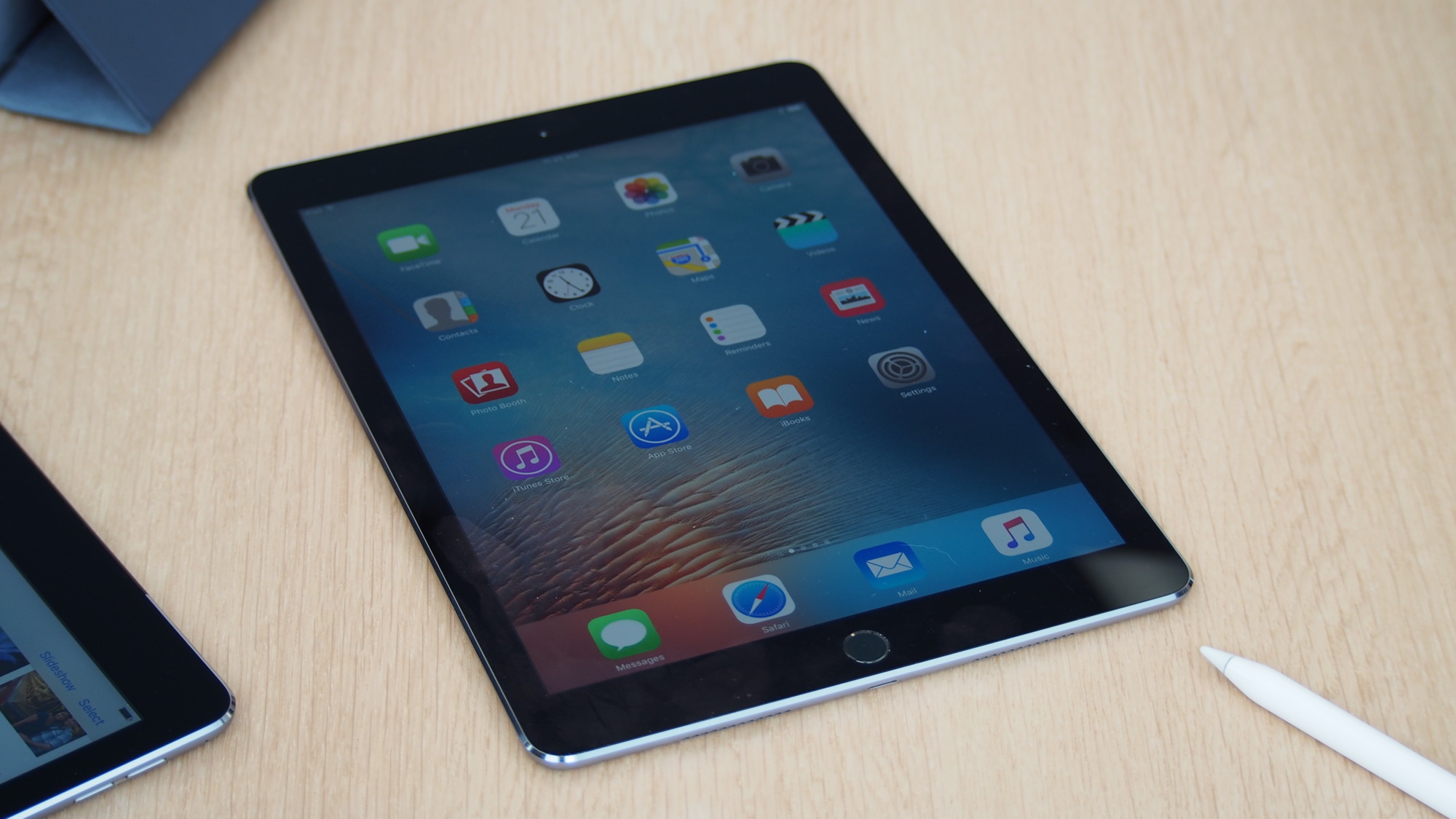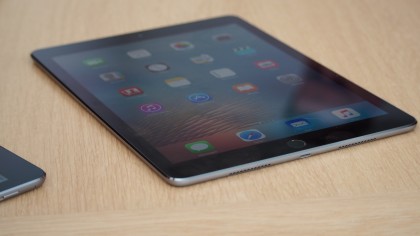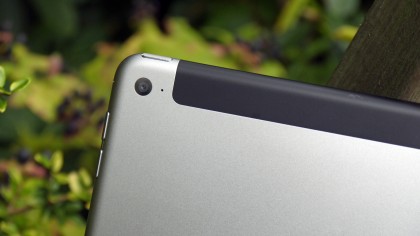iPad Pro 9.7 vs iPad Air 2
Apple's new flagship tablet has a new name, but what else has changed?

Apple's follow-up to the iPad Air 2 has been a long time coming. Not that we've felt that in need of one, as the iPad Air 2 is still, remarkably, one of the best tablets around.
In fact, Apple probably needed this long to create a new slate that meaningfully improved on its old one. So does the 9.7-inch iPad Pro do that?
It's certainly more powerful, and with a new moniker it's clear that Apple sees it as a new and different thing, which it's backed up with the likes of Apple Pencil support. But how much has really changed? And is it worth opting for, especially as it's more expensive than the iPad Air 2?
We've put the two slates head to head so you can decide for yourself.
- Hands on 9.7-inch iPad Pro review | 12.9-inch iPad Pro
Key features
The 9.7-inch iPad Pro is basically the 12.9-inch iPad Pro in a smaller package, which means you get support for the Apple Pencil and Smart Keyboard, plus a whole lot of power. Yet being a smaller size makes it more portable, which is why it's in many ways a successor to the iPad Air 2.

Speaking of the iPad Air 2, that was for a long time Apple's main flagship tablet, melding style, power and a large, but not too large, screen. A great quality display also helped, but it's getting on a bit now and you'll find all the same features and more in the iPad Pro (9.7-inch), albeit at a higher price.
Design
The 9.7-inch iPad Pro might be a very different beast to the iPad Air 2, but on the surface they're very similar. Both slates have a slim metal shell and both come in space grey, silver or gold, though the 9.7-inch iPad Pro also adds rose gold into the mix.
Sign up for breaking news, reviews, opinion, top tech deals, and more.

They also have exactly the same dimensions and weight, coming in at 240 x 169.5 x 6.1mm and 437g.
It's impressive that Apple's managed to pack so much power into such a small frame, but there are some changes, and they work in the iPad Pro (9.7-inch)'s favour. It has four speakers for example, providing far richer sounds, and it has a Smart Connector so you can attach Apple's Smart Keyboard to it.
Screen
At first glance the screen could seem similar too, as both tablets have a 9.7-inch 2048 x 1536 display, for a pixel density of 264 pixels per inch.
But there's a lot more going on with the iPad Pro's screen. It has a True Tone display, which can dynamically adjust the white balance, matching the light around you to make reading more comfortable.

It's also 25% brighter and 40% less reflective than the iPad Air 2's screen, which will be enormously useful when using it outside. Plus, it has 25% greater colour saturation, for more vivid colours than the iPad Air 2.
In short the size and resolution might not have changed but the overall quality of the 9.7-inch iPad Pro's screen should be a massive upgrade and that's saying something, as the iPad Air 2 already has a great display.
CPU
Apple's given its new slate a big boost in power as well, with the iPad Pro (9.7-inch) packing the same Apple A9X chip as the larger 12.9-inch iPad Pro, which is a huge upgrade on the iPad Air 2's A8X chip.
In fact, according to Apple the 9.7-inch iPad Pro offers up to 1.8 times the CPU performance and up to double the graphics performance of the iPad Air 2.
As fast as the iPad Air 2 is it's still just a tablet, while the iPad Pro (9.7-inch) is designed to be able to replace your PC, through a combination of serious horsepower and optional accessories, like the Apple Pencil and Smart Keyboard. So it's better for productivity and going forward the extra power should start to benefit it for games and apps too.
Camera
Apple's even pushed the boat out with the 9.7-inch iPad Pro's camera, giving it a 12MP rear camera and a 5MP front-facing one, just like the iPhone 6S. It can shoot video in 4K, take Live Photos and sports a True Tone flash, along with a Retina flash on the front to brighten up selfies.

The iPad Air 2 meanwhile has just an 8MP rear camera, a 1.2MP front-facing snapper and can only shoot video in up to 1080p. On paper it seems like the 9.7-inch iPad Pro should have a significantly better snapper than the iPad Air 2 and one of the best cameras ever to grace a tablet, but it's still a tablet, so you still shouldn't be using it as a camera.
Battery life
Battery life is one area which doesn't appear to have changed much, as Apple's quoting the iPad Pro (9.7-inch) as lasting for up to 10 hours of web browsing on Wi-Fi, watching videos or listening to music and it makes exactly the same claims about the iPad Air 2.
We'll let you know how the new Pro holds up in practise once we've put it through a full review, but the iPad Air 2 has pretty solid battery life and will easily last a day of quite heavy use, so the same is likely to be true here.
Price
Apple's starting the 9.7-inch iPad Pro at US$599 (£499, AU$899) for a 32GB Wi-Fi only model, rising to US$749 (£619, AU$1,149) for 128GB and US$899 (£739, AU$1,399) for 256GB.
If you want it with mobile data too you're looking at US$729 (£599, AU$1,099) for 32GB, US$879 (£719, AU$1,349) for 128GB and US$1,029 (£839, AU$1,599) for 256GB.
That's a lot of money and a lot more than the iPad Air 2 currently costs. Apple's previous flagship tablet can be grabbed for US$399 (£349, AU$599) with 16GB of storage or US$499 (£429, AU$729) with 64GB.
That's Wi-Fi only, for a model with mobile data it rises to US$529 (£449, AU$759) for 16GB or US$629 (£529, AU$889) for 64GB. There's no longer a 128GB model available and there was never a 256GB iPad Air 2.
So the iPad Air 2 is substantially more affordable than the 9.7-inch iPad Pro, but it's still far from cheap and has lesser specs and fewer features.
If you don't want all the productivity tools of the iPad Pro the Air 2 could be the better buy, but you'll still miss out on a better screen, improved speakers and a more powerful processor.
- Apple's also unveiled the iPhone SE.
James is a freelance phones, tablets and wearables writer and sub-editor at TechRadar. He has a love for everything ‘smart’, from watches to lights, and can often be found arguing with AI assistants or drowning in the latest apps. James also contributes to 3G.co.uk, 4G.co.uk and 5G.co.uk and has written for T3, Digital Camera World, Clarity Media and others, with work on the web, in print and on TV.